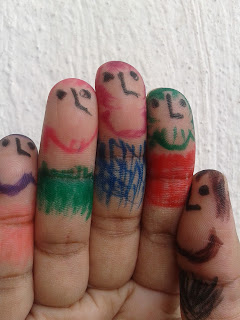Amazing Use of colour Cards: Communication, Team Management, Process Improvement

Have you ever thought about it, when the colours have more political and commercial significance than the colours of the Nature and of inherent human values? Colour cards can be made easily and used in many ways: Communication: A. Learning a Language: For instance, we can use colour cards to learn a language. For instance, to learn English language in a very simple way by using Color Cards that will represent the important parts of a sentence or speech and help us in understanding the relevance of each part in forming the sentence. First, we will make three colour cards for " Subject ", " Verb " and " Object " . Subject to represent the person or object that does the action or activity denoted by the " Verb" card and the " object" is the objective or result of the action. E.g. Girl makes tea. Girl = Subject, makes = Verb, tea = Object. Subject is person or

